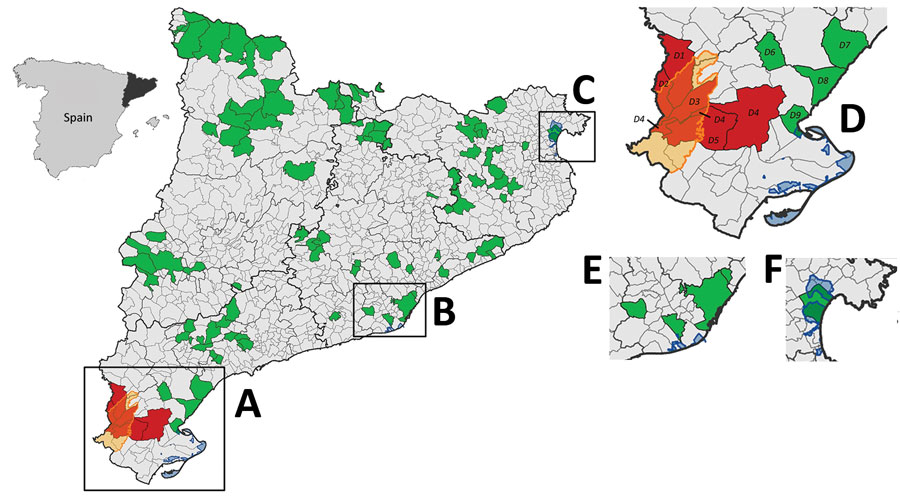Volume 27, Number 9—September 2021
Dispatch
Hotspot of Crimean-Congo Hemorrhagic Fever Virus Seropositivity in Wildlife, Northeastern Spain
Figure 1

Figure 1. Distribution of areas sampled for detection of antibodies against Crimean-Congo hemorrhagic fever virus (CCHFV) in various species, Catalonia, northeastern Spain. Inset at left shows Catalonia (black) in northeastern Spain. Large map shows distribution of serosurveys throughout Catalonia: A) Ebro Delta; B) Llobregat Delta; C) Aiguamolls de l’Empordà; Enlarged areas represent regions with wetlands (blue shading), which are stopovers for migratory birds from Africa: D) Ebro Delta; E) Llobregat Delta; F) Aiguamolls de l’Empordà. Green shading indicates areas from which all samples were seronegative; red shading indicates >1 sample was seropositive; gray shading indicates area was not sampled; yellow shading/outline indicates location of Ports de Tortosa-Beseit National Park. Additional details are provided on CCHFV hotspots in Ebro Delta (D), which are close to and overlap wetlands and Ports de Tortosa-Beseit Natural Park. Among regions in this area, animals tested (no. positive/no. tested) included the following: D1, Iberian ibexes 10/10, wild boar 4/21; D2, Iberian ibexes 17/17, roe deer 1/1, wild boar 1/3; D3, Iberian ibexes 3/3; D4, Iberian ibexes 8/8, European rabbit 0/2; D5, Iberian ibexes 28/28, European rabbit 0/2; D6, European rabbit 0/6; D7, roe deer 0/1; D8, European rabbit 0/1; and D9, European rabbit 0/1.